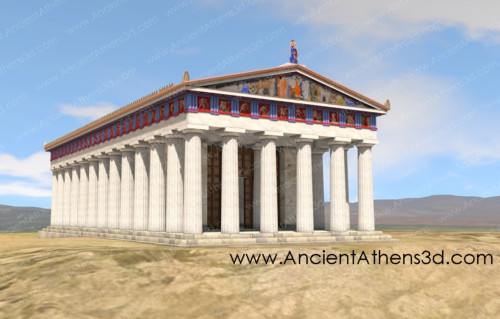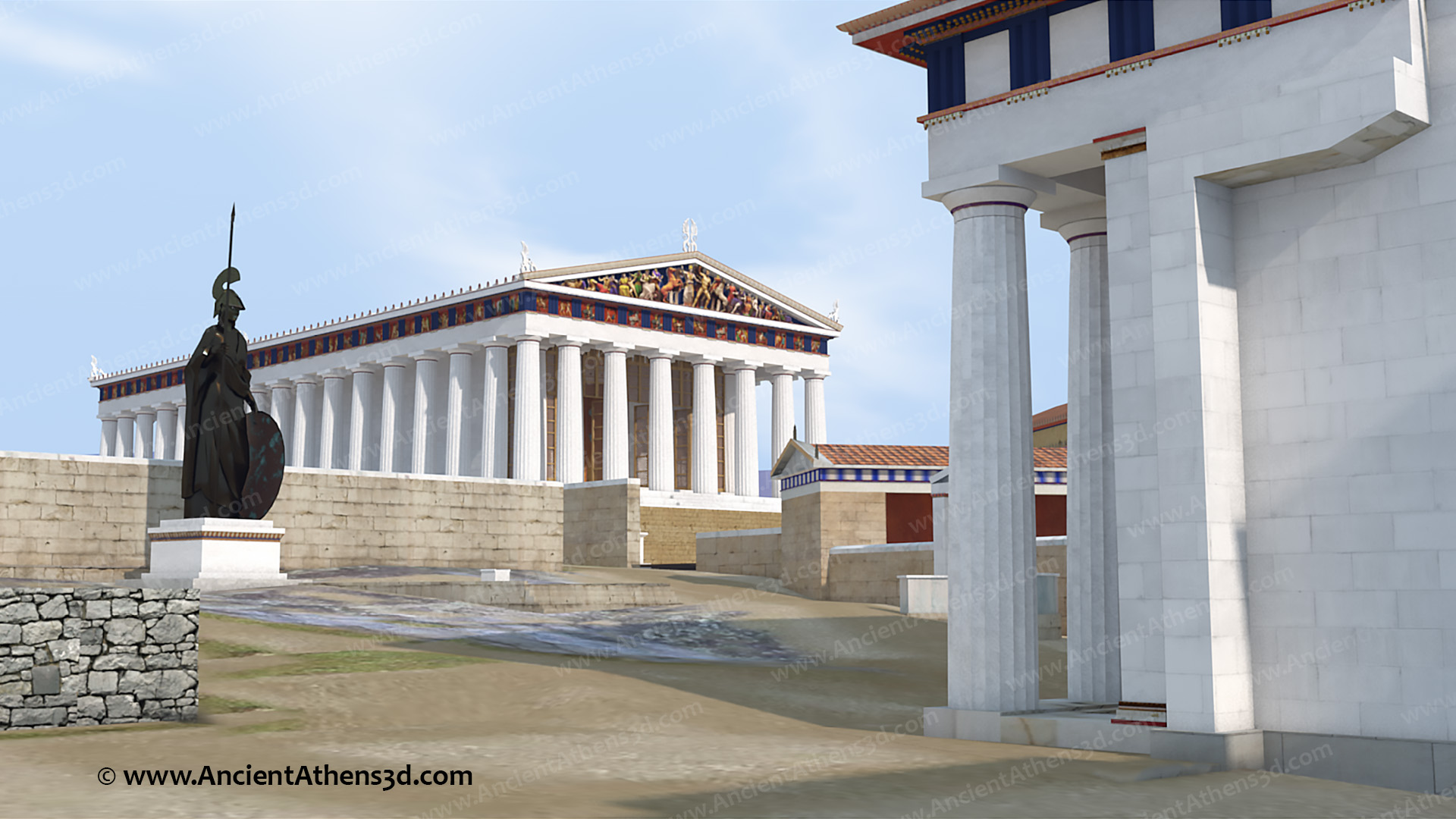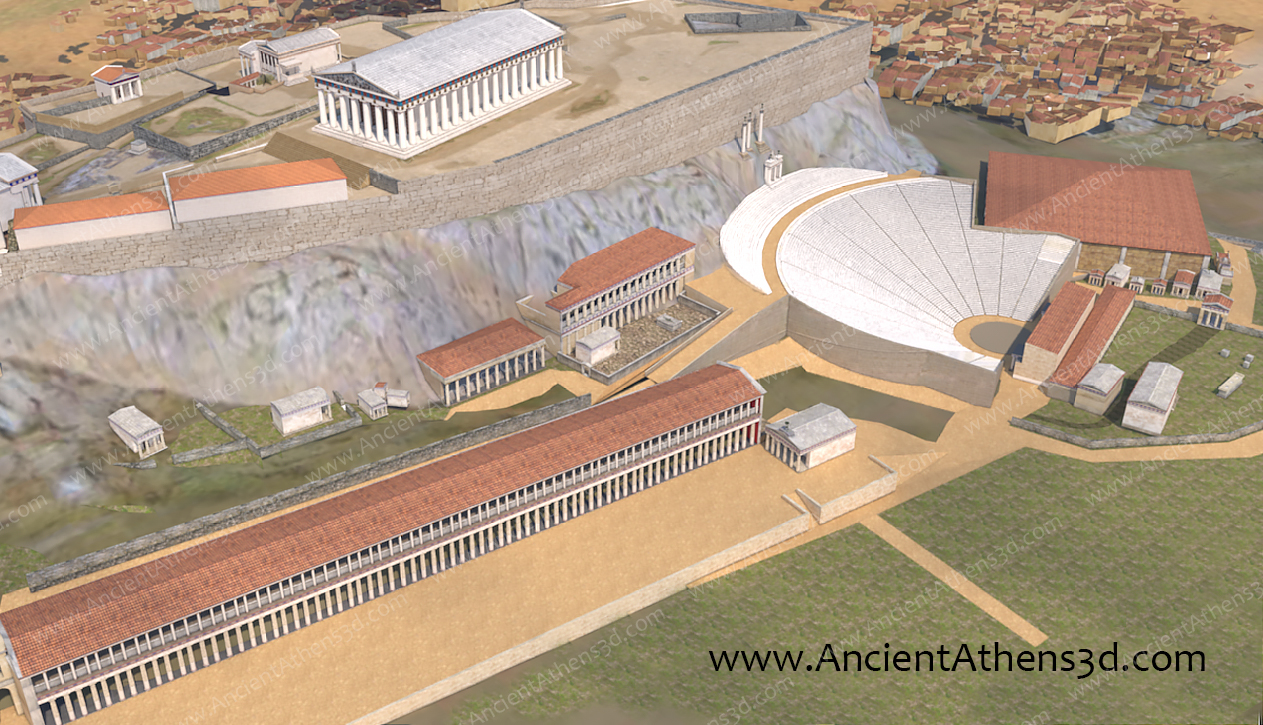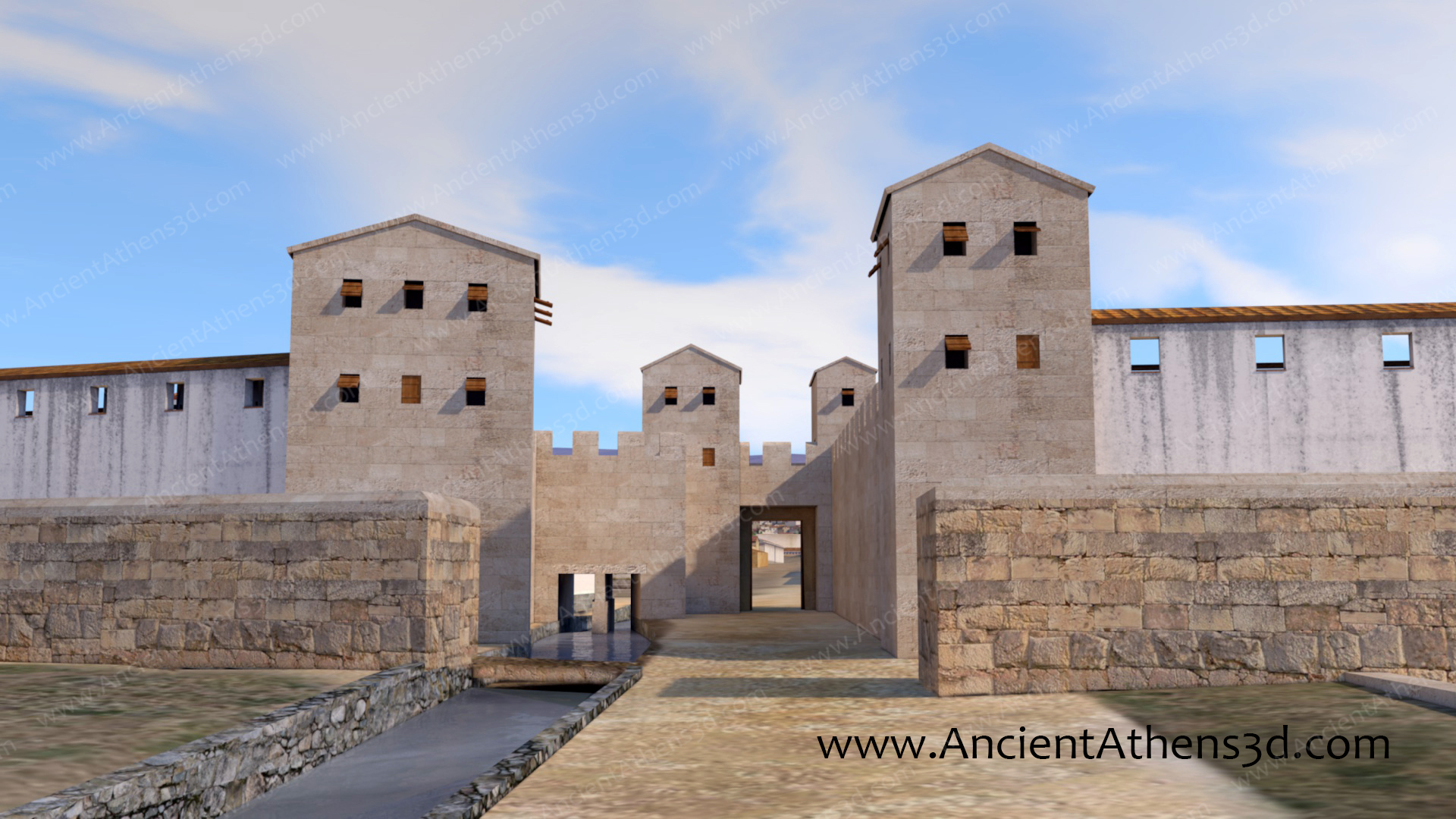The Classical Agora of Athens 479-323 BC
During the Classical Times, Agora was the centre of the social and political life of Athens. Public buildings, sanctuaries and fountain houses were constructed. The area between these buildings, used for feasts and athletic games, was filled with statues and altars.
The Agora during the 5th century BC.



















